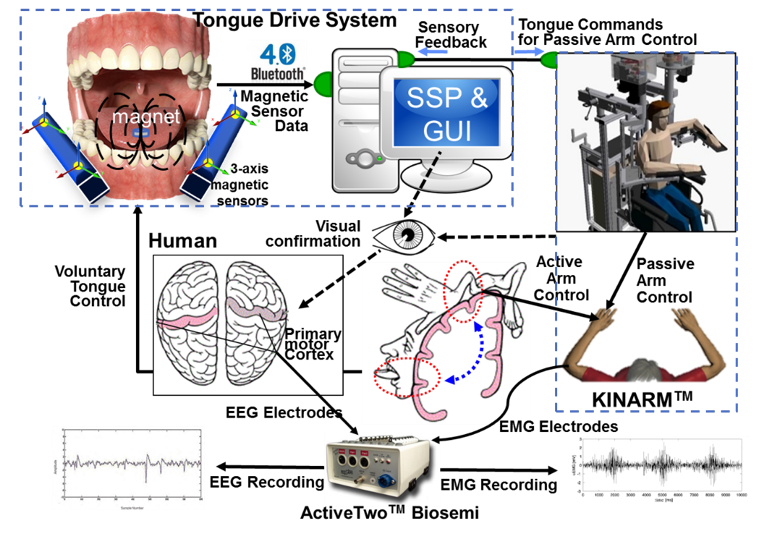Each year, around 80% of 795,000 stroke survivors suffer from loss of functionality in their upper extremities. We would like to evaluate a novel tongue operated rehabilitation system for upper limb function recovery. This project is based on the studies that have shown accelerated progress in rehabilitation when limb movements are initiated by the patient and the hypothesis that the brain plasticity allows unharmed parts of the brain to adopt the functionality of the affected parts of the brain through robotic rehabilitation exercise. Specifically, we use a wireless and wearable assistive technology, called the Tongue Drive System (TDS), to translate tongue motions to control commands for an exoskeleton robots for the upper limbs, called the KINARM. We have also designed a variety of rehabilitation tasks for the stroke patients to improve their upper limb movements and plan to evaluate them clinically.
Zhenxuan Zhang, Boris Prilutsky, Minoru Shinohara, and Maysam Ghovanloo

